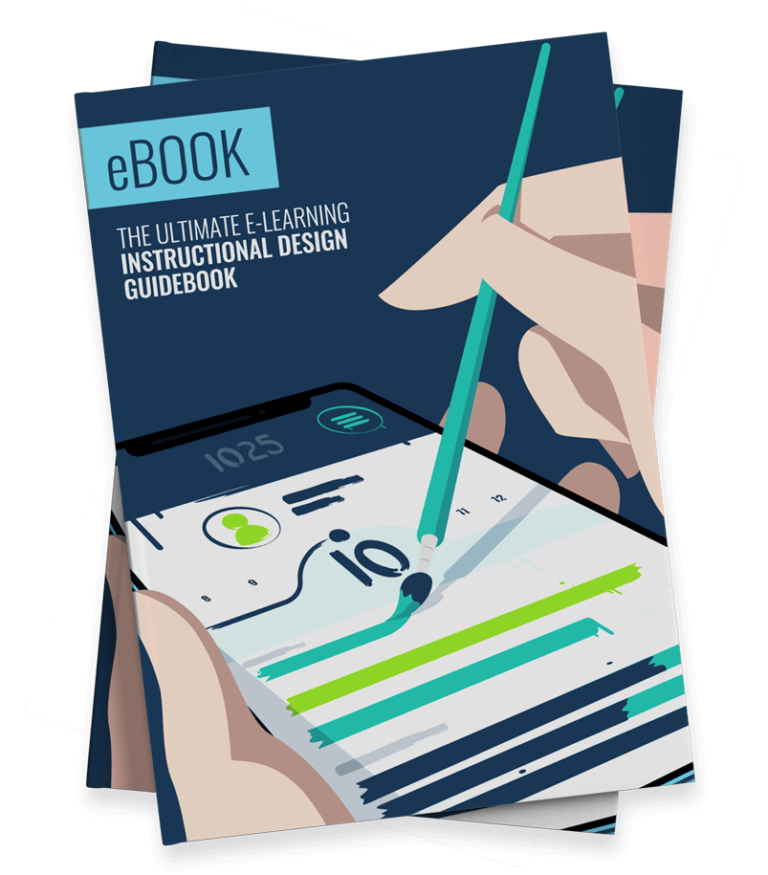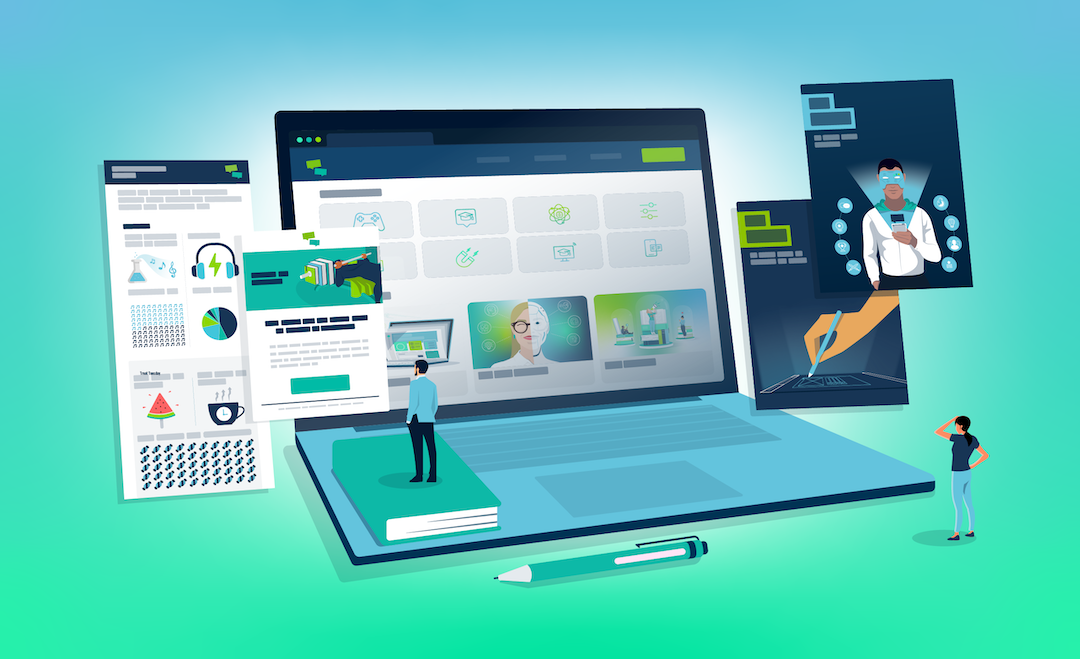
The age-old adage claims: the best way to learn is to teach. But is there real truth to this wisdom? Enter the protégé effect, a learning concept that suggests that explaining information to others helps to boost our own understanding.
Think about a time you’ve been asked to tutor someone, lead a study group or help a colleague at work. This sense of responsibility fuels motivation and encourages us to organise and structure our thoughts effectively.
In turn, these mental gymnastics strengthen our memory pathways leading to a deeper, more nuanced understanding of the subject matter. Indeed, the more you explain a concept, the stronger your grasp becomes.
The idea of learning by teaching isn’t new. The Roman philosopher Seneca eloquently captured this concept over 2,000 years ago, with the quote, ‘While we teach, we learn.’ That said, modern research has helped to expand our understanding of the protégé effect.
We’ll be exploring this research in this article, alongside practical ways to leverage the protégé effect within learning and development programmes. This will equip you with a powerful strategy to transform passive learning journeys into engaging experiences.
Ready to put the ‘pro’ in protégé effect? Then let’s go!
What is the Protégé Effect?
The protégé effect is a concept in learning that suggests we learn more effectively by teaching information to others, even if those others aren’t necessarily any less knowledgeable. As author Robert Heinlein puts it, ‘when one teaches, two learn’.
This method, also known as learning by teaching, was originally developed by Jean-Pol Martin in the 1980s.
To put it in simpler terms, explaining a concept to someone else helps you to develop your own understanding of it. The process of explaining forces you to organise your thoughts, identify gaps in your knowledge and strengthen your grasp of the subject.
Here’s what makes it even more interesting: you can benefit from the protégé effect even if you don’t actually teach anyone. Just going through the motions of preparing to teach, like outlining the material or creating a practice lesson, can enhance your learning.
The protégé effect might seem surprising at first. After all, wouldn’t it be more efficient to simply restudy the material? Well, it turns out that’s just not the case. This is an active learning strategy that deepens your understanding while potentially helping others as well.
Research into the Protégé Effect
The protégé effect is a learning strategy supported by research. A compelling example comes from this 2009 study on ‘Teachable Agents’. A Teachable Agent is a digital character that’s capable of reasoning based on how it’s taught.
The students who interacted with these agents showed a significant improvement in learning compared to those who didn’t. In other words, even simulated teaching can activate the protégé effect.
Need more evidence?
- A 1984 study found that the expectation of teaching increased intrinsic motivation more than being required to take a test or assessment.
- A 2014 study shows that an ‘expectation to teach’ increases ‘learning efficiency at home and in the classroom’.
- A 2016 study demonstrated that those who learn by preparing to teach use 1.3x more metacognitive strategies than those who don’t.
- This 2016 study revealed that expecting to teach a motor skill enhances the learning of the skill.
We should also note that whilst preparing to teach has its benefits, research suggests that the biggest learning gains come from actually delivering instruction. A 2013 study found that students who actively taught material in groups ‘significantly outperformed’ those who only prepared to teach.
Did you know: Older siblings tend to have a higher IQ than their younger siblings (by about three points). This can be attributed, in part, to the protégé effect. After all, older siblings often act as mentors and teachers for their younger siblings.
How the Protégé Effect Works

The protégé effect offers a compelling way to boost learning. But how exactly does it work? What psychological mechanisms are at play and what cognitive and motivational levers does it pull on to enhance understanding?
- Metacognition: When you prepare to teach someone else, you engage in a deeper analysis of the material. After all, it’s not sufficient to have a surface level of knowledge. To teach effectively, you need to identify important concepts, organise them logically and fill any gaps in your own understanding.
- Spaced Repetition: The protégé effect also encourages spaced repetition, which has been shown to effectively combat the forgetting curve. Preparing to teach involves the repeated retrieval and reorganisation of information. This strengthens memory pathways leading to improved retention.
- Better Instruction: Even if you don’t actually teach anyone, going through the motions of preparing can be beneficial. This process of self-explanation acts like a spotlight, revealing areas where your understanding is shaky. You can then focus your learning and build a more comprehensive grasp of the subject.
- Active Learning: The act of explaining something forces you to actively process information. This stands in stark contrast to passively listening, reading or even highlighting. This is beneficial, as active learning has been shown to improve knowledge retention by 39%.
- Autonomy: When learners have some choice in how they ‘teach’ the material (such as the format), it increases their sense of autonomy. This often leads to higher levels of ownership and engagement. Indeed, 79% of autonomous employees are more engaged than those who lack autonomy.
- Motivation: Knowing that you’ll need to explain something to others creates a sense of responsibility. In turn, this can provide the motivation we need to pay closer attention and focus more intently while studying. The end result is a more dedicated and thorough learning experience.
In a sense, the protégé effect acts as a springboard, propelling learners towards the higher levels of Bloom’s Taxonomy. Many learning experiences focus on ‘understanding’ or ‘remembering’. But challenging your learners to teach forces them to analyse, evaluate and create new learning experiences.
Further Benefits of the Protégé Effect
In exploring how the protégé effect works, we’ve uncovered some of the benefits of this approach. As a result of this active learning approach, and increased motivation, these students tend to perform better than those who are learning just for themselves.
But these learning benefits are just the tip of the iceberg. The act of teaching itself offers a wealth of personal development advantages. For instance, by honing your teaching abilities, you can also expect to boost your communication and leadership skills.
What’s more, successfully explaining a concept and seeing understanding dawn in your ‘students’ eyes is a powerful confidence booster. This newfound swagger can spill over into other areas of your life, enhancing your overall self-belief.
And let’s not forget, teaching also has benefits for the students being taught. Furthermore, research suggests that students often learn more effectively from instructors who are closer to them in terms of social and cognitive distance.
The Limitations of the Protégé Effect
While powerful, the protégé effect does have some limitations to consider. It’s not right for every learning programme. Let’s explore some key considerations to ensure you’re able to implement this learning technique effectively.
- Prior Knowledge: The protégé effect works best when you have a solid foundation in the subject matter, or are able to invest time and effort into building your knowledge. If your own understanding is shaky, trying to teach it might perpetuate misconceptions.
- Instruction Quality: Good teachers are hard to find. Quality instruction doesn’t always come naturally. In turn, the effectiveness of the protégé effect depends on the standard of the instruction delivered. Poorly explained concepts can lead to further confusion for both parties.
- Topic Choice: The protége effect might be better suited for some subjects than others. After all, certain topics are difficult to teach. For instance, explaining highly technical concepts or skills might require a different approach (such as scenario-based learning).
- Learner Preference: Whilst learning styles have been debunked, it’s fair to say that most of us have a set of learning preferences. Learners who prefer a passive approach to their studies might be put off by the need to teach others, and may struggle to engage fully.
How to Implement the Protégé Effect in Learning Programmes

As we’ve seen, the protége effect offers a powerful tool for instructors to enhance learning outcomes in various educational and training contexts. So, how do you go about integrating this strategy into your structured workplace learning programmes?
- Peer-Learning: Start by establishing group projects, where students take turns explaining concepts to each other. Peer-to-peer learning opportunities can include presentations, discussions, projects and collaborative knowledge-building exercises. This can often lead to a knowledge-sharing culture within your organisation.
- User-Generated Content: For peer learning and the protégé effect to thrive, you’ll need to encourage user-generated content (UGC) across your training touchpoints. You can do this by setting clear expectations, requesting feedback and making participation fun. Why not kick things off with a poll, or a competition?
- Learning Platforms: Most learning management systems and learning apps come equipped with powerful social learning features. Consider implementing discussion forums, social feeds, live chat and other opportunities for peer-to-peer learning. This gives your learners more opportunities to share their knowledge.
- Mentorship Programmes: You can also formalise the protégé effect by pairing more experienced learners with newer team members. Mentorship programmes tap into your experts’ knowledge and provide your mentees with valuable support. This creates a win-win situation for both the mentor and the mentee.
- Flipped Classrooms: With a flipped classroom approach, students learn core concepts independently outside of class. Inside the class, they take centre stage, leading discussions and explaining concepts to their peers. The instructor acts as a facilitator, guiding the process and correcting any misconceptions that arise.
Ultimately, embracing the protégé effect means handing ownership over to your learners, wherever you can. As a result, learning professionals may need to switch focus from delivery to facilitation and curation.
The transition towards a learner-centred approach may not come easy, but it is a key characteristic of a high-performance learning culture. Achieving this can lead to a 37% increase in employee productivity and a 17% boost in profitability.
Best Practice Tips for the Protégé Effect
Unleashing the raw power of the protégé effect requires more than assigning learners the role of teacher. To maximise the benefits for both learners and instructors, consider implementing these best practice tips.
- Clear Objectives: The foundation of any effective learning experience is a clear learning objective. Before embracing the protégé effect, you should ensure your learners understand your goals and what’s expected of them. This will help them to focus their explanations and provide real value.
- Match Skill Levels: To ensure efficient knowledge transfer via the protégé effect, attempt to pair learners with similar skill levels in peer-teaching activities. This prevents wasted effort, avoids retreading familiar ground and ensures both parties get the most out of their teaching experiences.
- Offer Support: Remember, most of your learners will have limited experience teaching others. Consider providing additional support in the form of instructional guidance, teaching templates or evaluation criteria. You could even offer opportunities for them to practise their explanations beforehand.
- Celebrate Success: Publicly acknowledge and celebrate instances where learners effectively explain concepts to their peers. This can motivate others to participate. You can also use game mechanics like badges, experiences points and leaderboards to incentivise activity and guide the learning process.
Final Words
The power of learning by teaching is undeniable. By embracing the protégé effect, you transform learners from passive recipients into active players in their learning journey. In turn, this fosters a dynamic and collaborative learning environment for all involved.
Why not see for yourself? Challenge yourself to explain the protégé effect to a colleague or a friend. By taking on the role of teacher, you’ll solidify your understanding of the material by adding structure to your thoughts and boosting your motivation.
Remember, the protégé effect thrives on active engagement. To get the most out of this approach, you’ll need to provide learners with a platform to share their knowledge and regular peer-to-peer learning activities.
Your role may change as a result, but it’s the outcomes that matter most. In this case, that means more confident and knowledgeable learners who are empowered to share their insights. Now isn’t that a mouth-watering thought?
Thank you for reading. The protégé effect is one instructional approach among many. We’ve collected a wealth of best practice advice and application tips in ‘The Ultimate Instructional Design Guidebook’. Download it now!









